Some of the links in this post may be affiliate links.
Wondering what the best soil for your spider plant is? In this post, I’ll provide 3 amazing options. One of them is a pre-packaged mix that you can use straight out of the bag, and the other two mixes are simple DIY blends.
Keep reading so you can learn all about the best soil for spider plants.
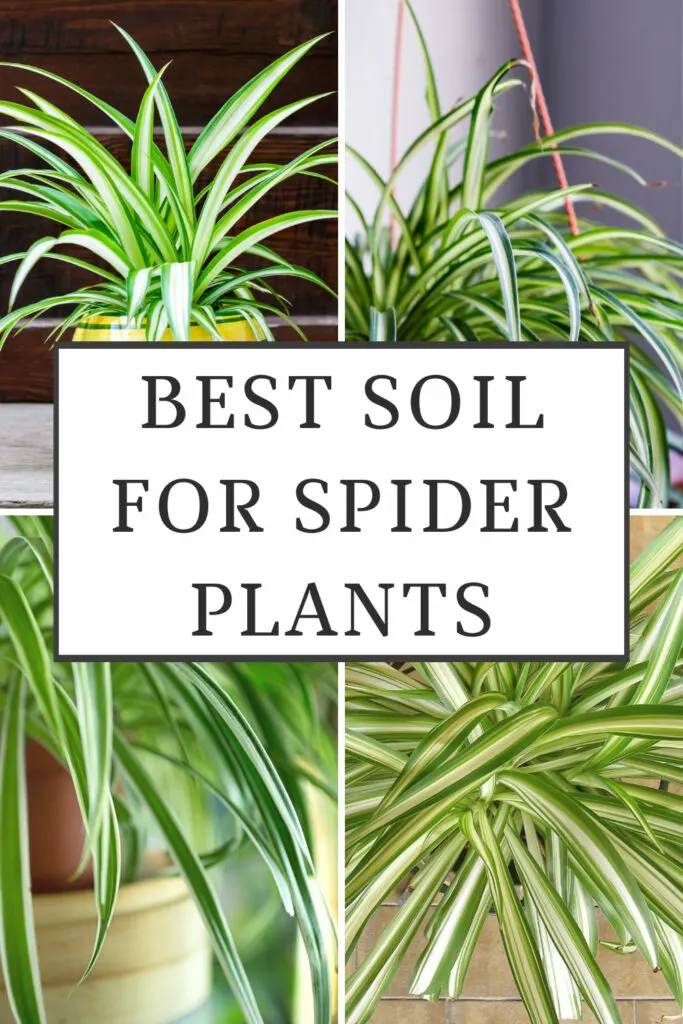
Table of Contents
BEST SOIL FOR SPIDER PLANTS
Chlorophytum comosum, commonly called spider plant, airplane plant, and ribbon plant, is native to many countries of Africa.
They typically grow in moist river valleys, but they are equipped with fleshy, succulent roots which will help them survive periods of drought.
Although the kind of soil that you use is only one factor in the health of your plant, it is an important factor and using the wrong soil mix can be detrimental.
Regardless what type of soil you use, you’ll want the following general qualities:
- They need well-draining soil. Mixes that stay too wet for a long time, and using pots with no drainage holes, can encourage root rot. Good drainage is essential.
- The right soil should have a neutral or even slightly acidic pH level.
- You’ll want to use a mix that has enough water retention, but is porous enough that it will dry out in a reasonable amount of time.
Here are my top 3 choices for best soil mix for spider plants.
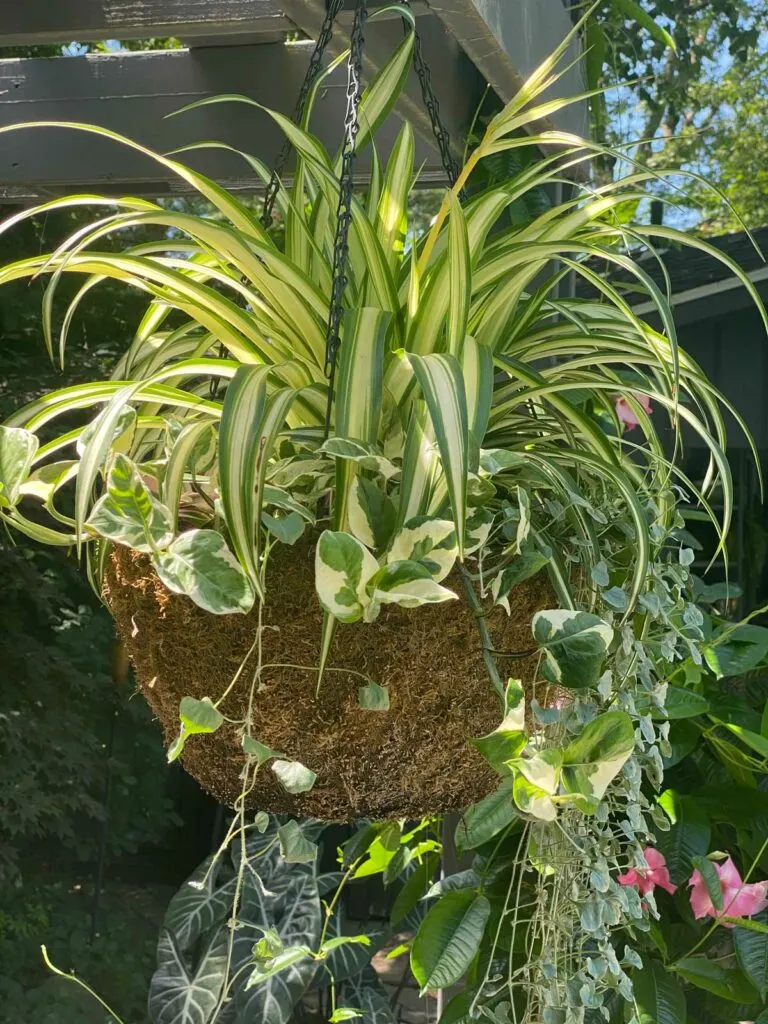
1. RAINFOREST SOIL BLEND
I rarely use any potting mix straight out of the bag, but the potting mixes from Oh Happy Plants are an exception!
Their potting mixes are carefully formulated to meet the soil requirements of a wide variety of indoor plants.
The Rainforest Soil Blend from Oh Happy Plants is wonderful for spider plants and can be used straight out of the bag.
Here are are some reasons why the Rainforest Soil Blend from Oh Happy Plants is so wonderful:
- If you are focused on sustainability, all the mixes from Oh Happy Plants use sustainable materials. They use no peat moss, and instead, use renewable resources such as coco coir and coco chips.
- Their mixes use plenty of organic matter so they are quite nutritious for your plants.
- The addition of various seed meals and rock dusts provides essential nutrients for your spider plants.
- The inclusion of a mycorrhizal inoculant encourages a healthy root zone, and thus will help to improve your plant’s health.
- There is a perlite-free mix, which is great because there are concerns of fluoride in in perlite. Spider plants are one of the common indoor plants that are sensitive to fluoride and respond with brown leaf tips. Brown tips on spider plant leaves are one of the most common problems with these plants, but can be caused by other factors too. Keep in mind though that tap water also contains fluoride.
- Instead of perlite, rice hulls are used.
- The Rainforest Soil Blend is not only wonderful for spider plants, but it is also ideal for Philodendron, Syngonium, Spathiphyllum (peace lily), Aglaonema (Chinese Evergreen), Ficus species (rubber plant, fiddle leaf fig, etc.), and Pachira aquatica (money tree) and others.
Using my links above will also give you 10% off automatically at checkout! I’ve been using many mixes from Oh Happy Plants and they are truly wonderful mixes! The best part is that they are turn-key and can be used straight out of the bag.
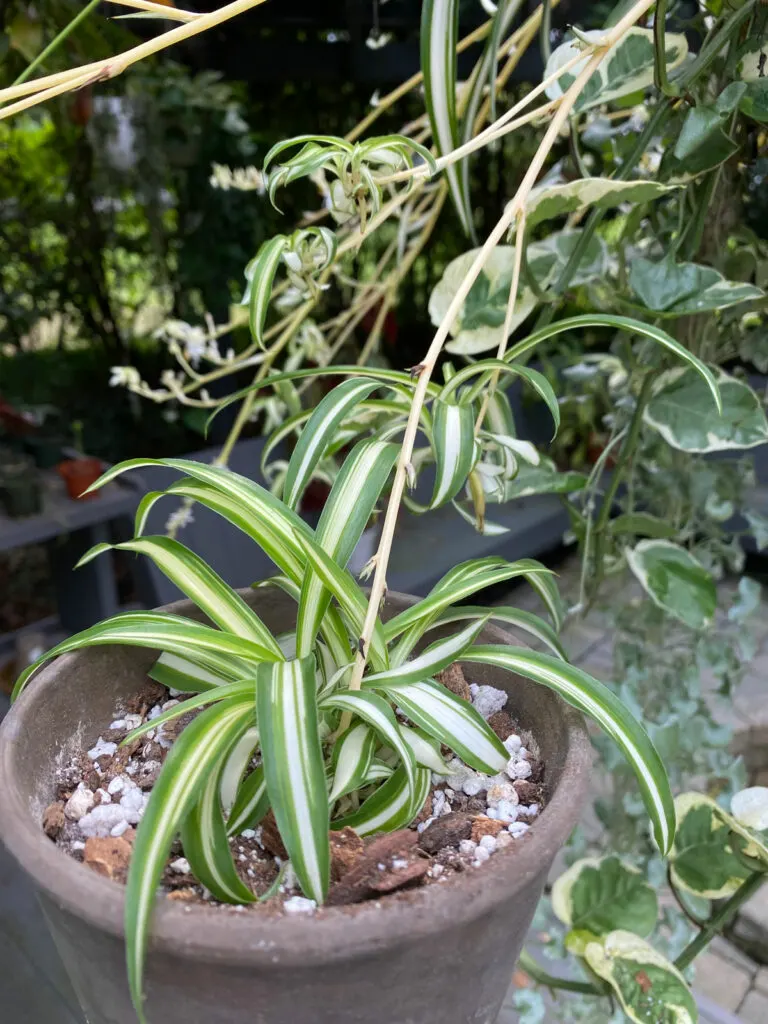
2. DIY MIX #1
Most widely available commercial potting mixes aren’t well-suited to be used on their own because they lack needed porosity.
This becomes particularly important if your plants are growing in less than ideal light conditions (poor light, cool temps, oversized pots, etc).
Potting mixes like Miracle-Gro or Espoma are great, but they need some chunky material mixed in to improve drainage as well as to provide more air to the root system of your plant.
A simple potting mix that you can make at home is 2 or 3 parts of Miracle-Gro or Espoma potting mixes and 1 part of orchid bark (link to Amazon).
The orchid bark will really improve the drainage and allow excess water to easily drain away.
Of course, don’t forget to use a pot with a drainage hole. This is non-negotiable.
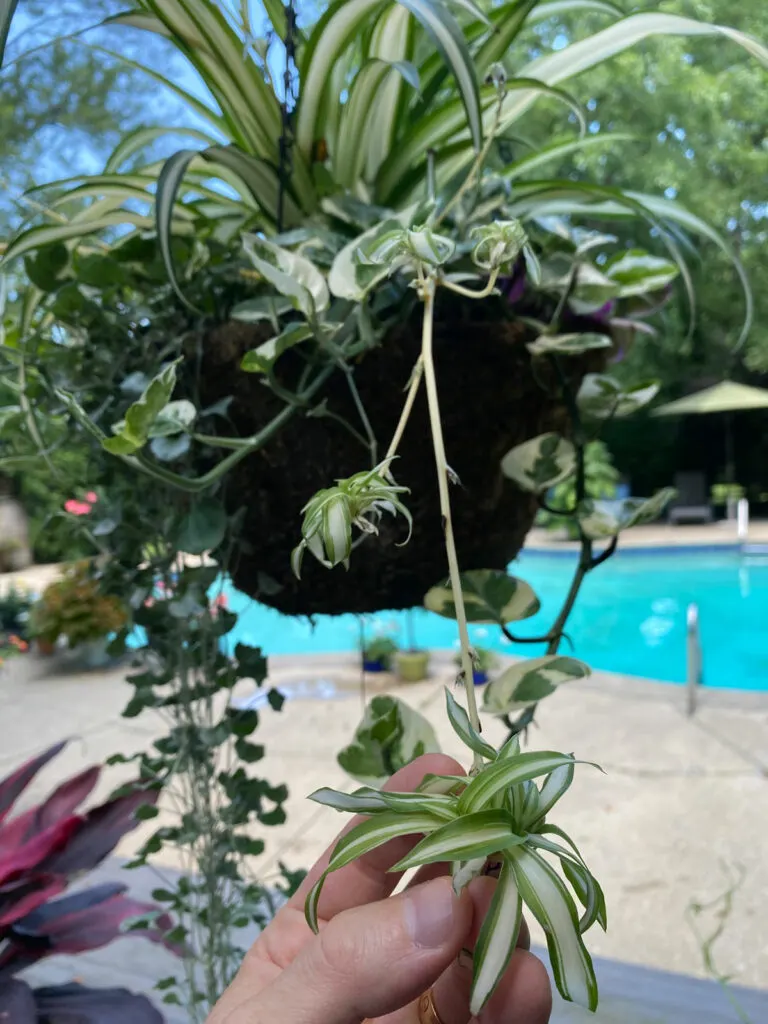
3. DIY MIX #2
Another option for a simple blend at home is to use 2 or 3 parts of Miracle-Gro or Espoma potting mixes and 1 part of pumice.
Pumice is a wonderful material and has the benefit of not floating to the surface like perlite does.
I love the 1/4 inch pumice from Bonsai Jack’s. It is also uniform in size and quality and I’ve been using it for years to improve drainage of commercial potting mixes.
You could use perlite vs. pumice if you’d like, but like I’ve mentioned earlier, spider plants are sensitive to fluoride, and there is some concern about fluoride content in perlite.
I’m not saying that you can’t grow spider plants in mixes with perlite, but it may contribute to brown leaf tips in spider plants.
That being said, tap water also has fluoride, and probably would contribute more fluoride than perlite would, so if you choose not to use perlite for the fluoride reason, you should also not use a water source like tap water that contains fluoride.
Try using distilled water, or if you don’t want to keep buying jugs of distilled water, check out my post on the best distilled water alternative that you can easily make at home!
It is a filter that creates water that is almost as pure as distilled, and also knocks down the fluoride levels in tap water.
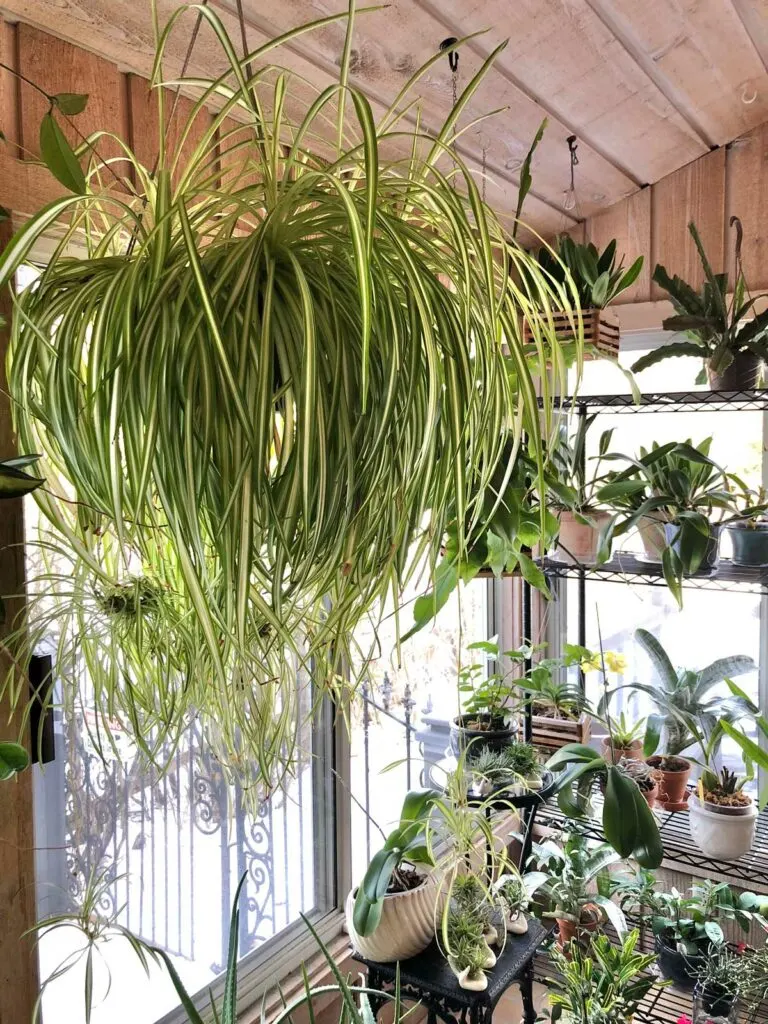
These are not the only mixes that you can use, but these 3 would work very well for spider plants.
I would avoid using any mixes labeled as cactus soil or succulent soil. In general, they will tend to stay too dry for spider plants.
SPIDER PLANT CARE CONSIDERATIONS
Choosing the right spider plant soil mix is only part of the equation for good spider plant care. Keep the following in mind as well for good care.
LIGHT
Spider plants thrive in indirect light, but please be sure it is immediately in front of a window. If you have your plant too far from a window, the leaves will get floppy and weak and start to bend and crease.
Immediately in front of a window that gets no direct sun works well, but they can also take a few hours of direct sun indoors.
An eastern or western-facing window will also work very well.
WATERING
Spider plants do not like dry soil, but their succulent roots will tide them over for a bit in case the soil gets really dry.
On the opposite end, they do not like soggy soil either. Aim to only allow the top inch or two of your potting soil mix to dry out before watering again thoroughly.
Avoid letting them sit in water for extended periods of time.
Remember that spider plants are sensitive to fluoride in tap water (and potentially from fluoride concerns in perlite).
The plant will respond by the tips of the leaves turning brown, but remember that spider plant brown leaf tips can be caused by many things.
FERTILIZING
Regular fertilization is important for healthy growth of spider plants because they grow so quickly, so nutrients will get depleted quickly.
If you want to use organic fertilizers, many people like using worm castings to mix into their soils.
I prefer the convenience of simply using a good water-soluble fertilizer like Dyna-Gro Grow.
I love this fertilizer because it is a complete fertilizer. It contains all the macro and micro nutrients that plants need to thrive.
I’ve been using Dyna-Gro Grow on most of my plants for many years now, and with great results!
OTHER SPIDER PLANT RESOURCES
If you’ve enjoyed this post, you may enjoy some other pieces of content that I’ve written on spider plants:
Why is my spider plant turning white?
How to propagate a spider plant – 5 methods
How to grow spider plants in water

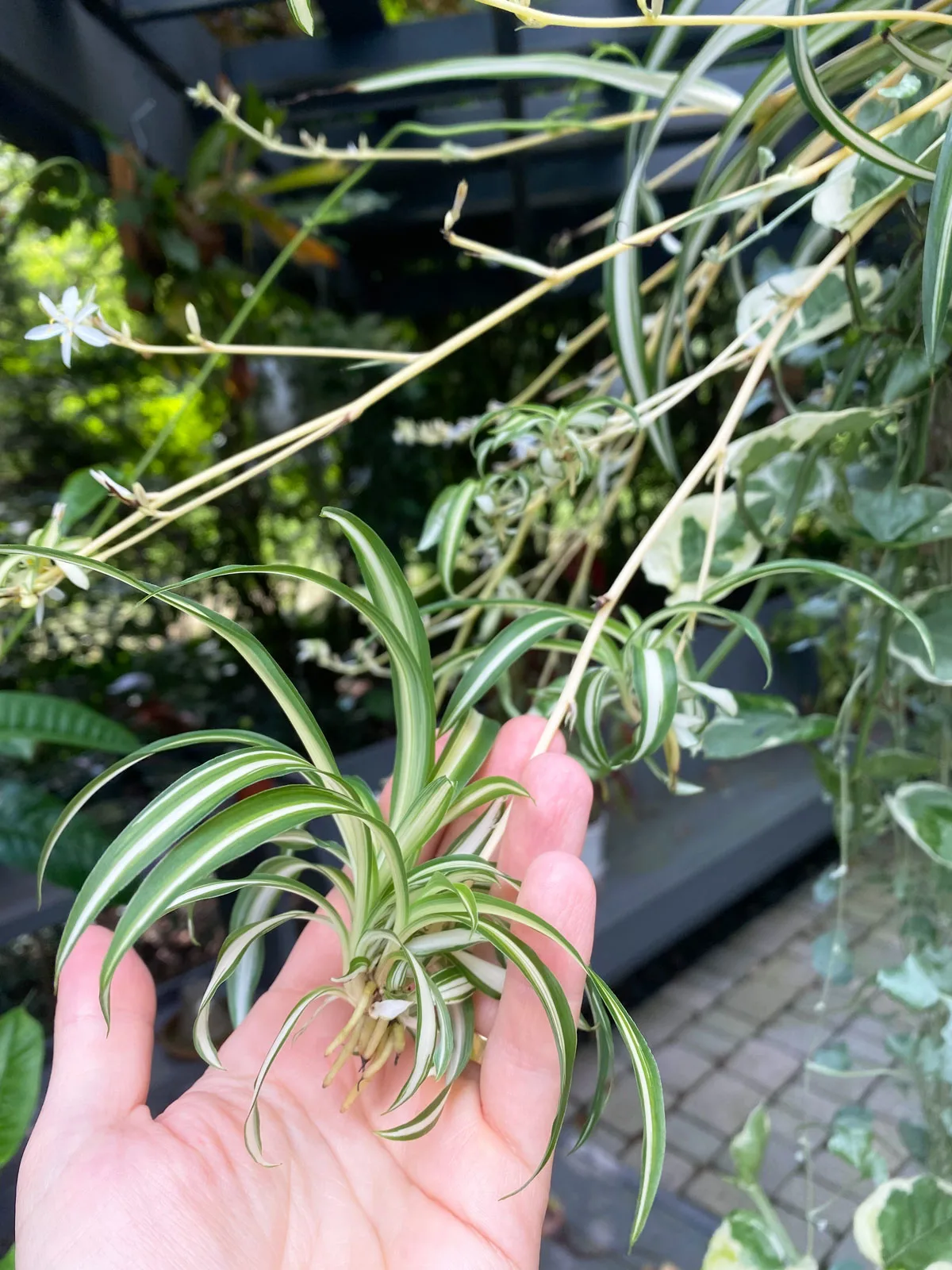
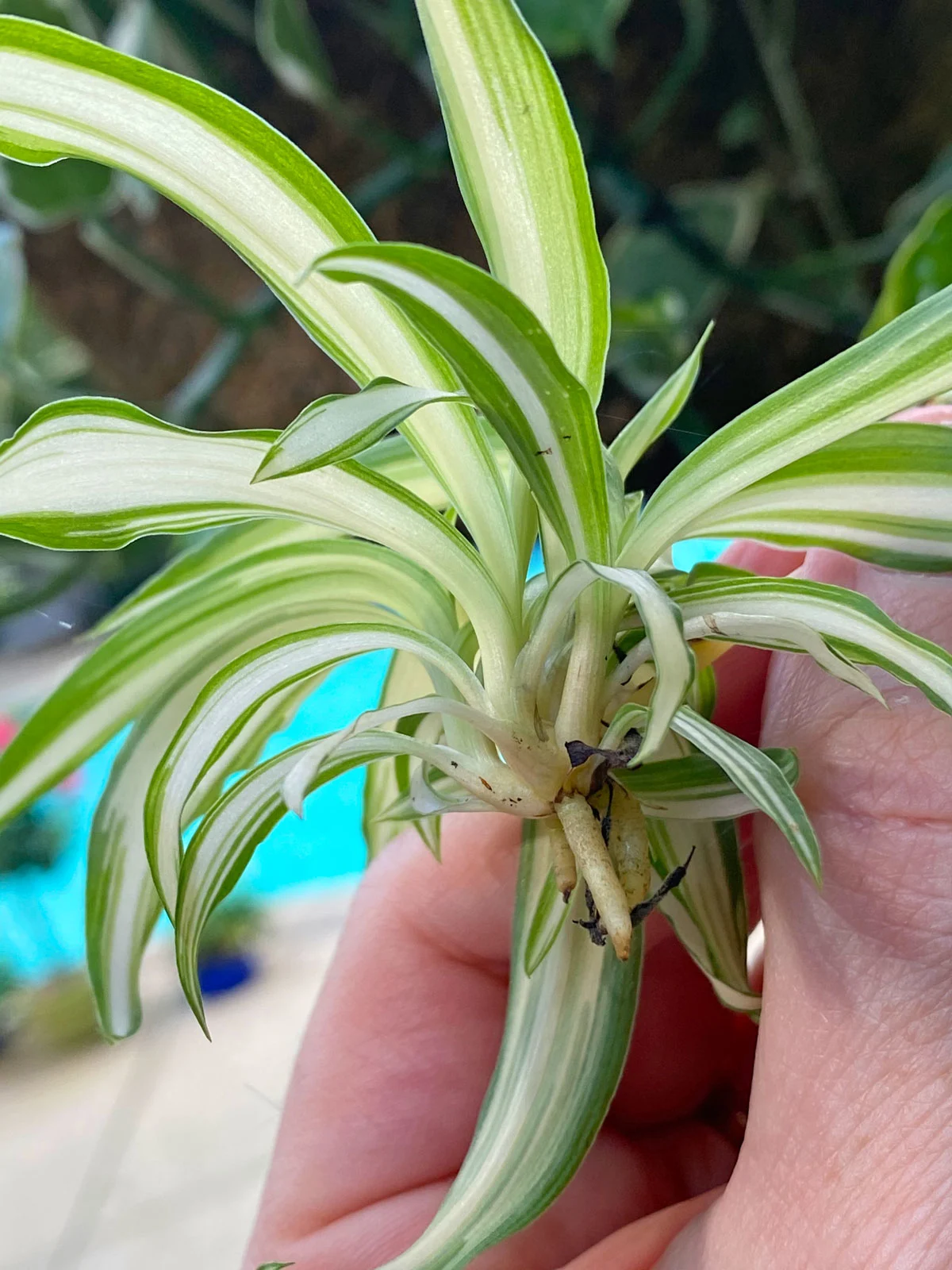
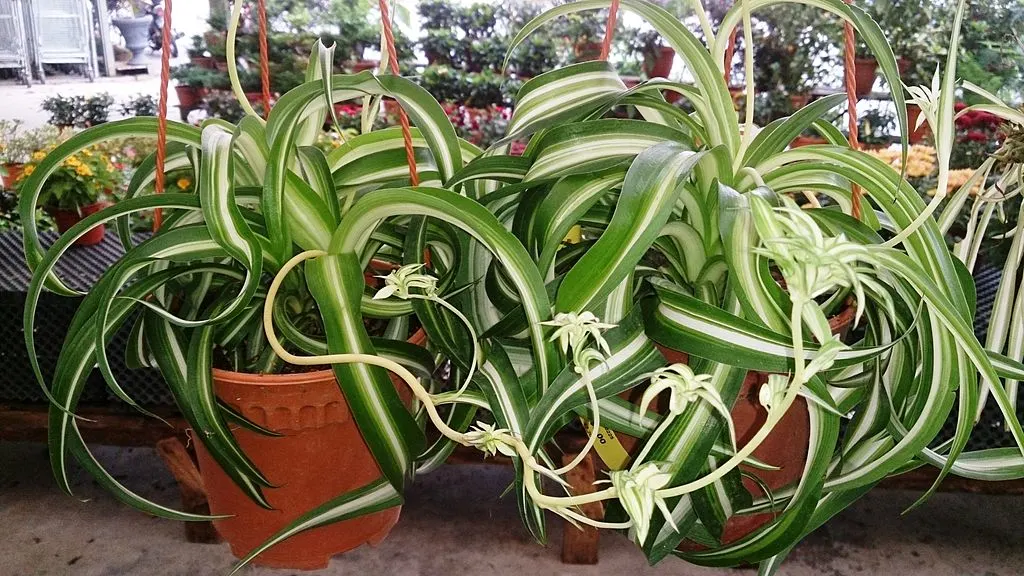
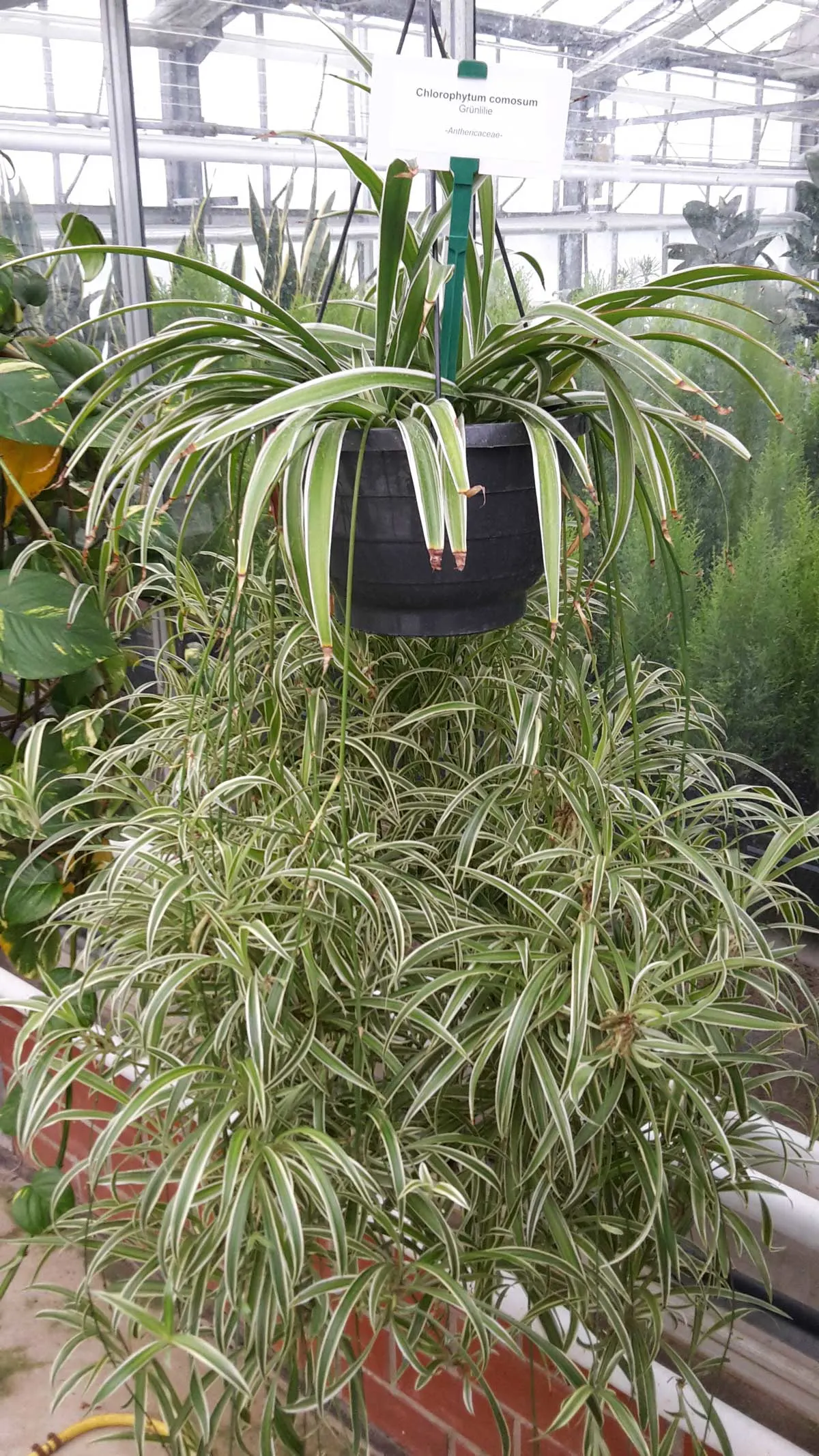
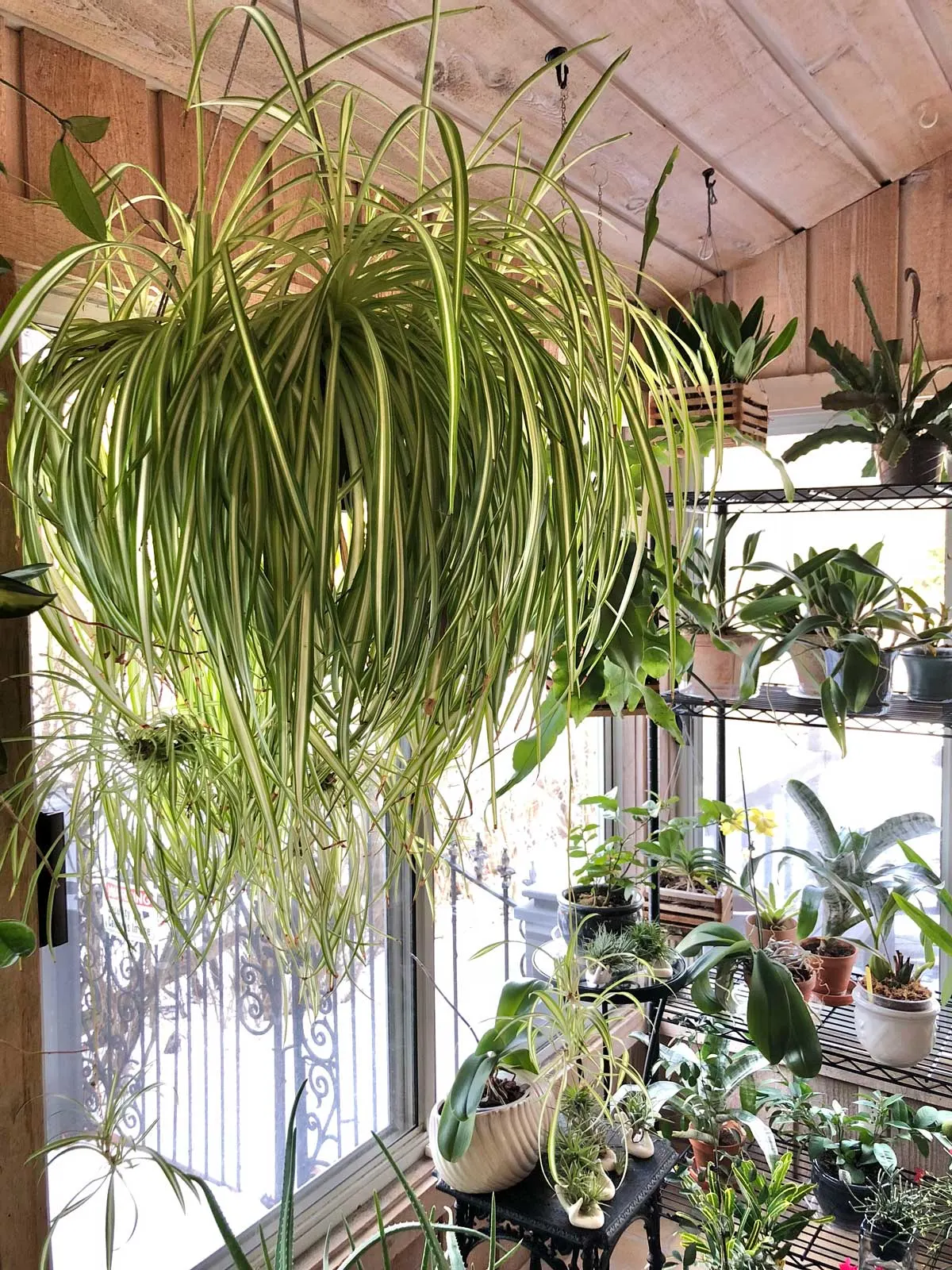
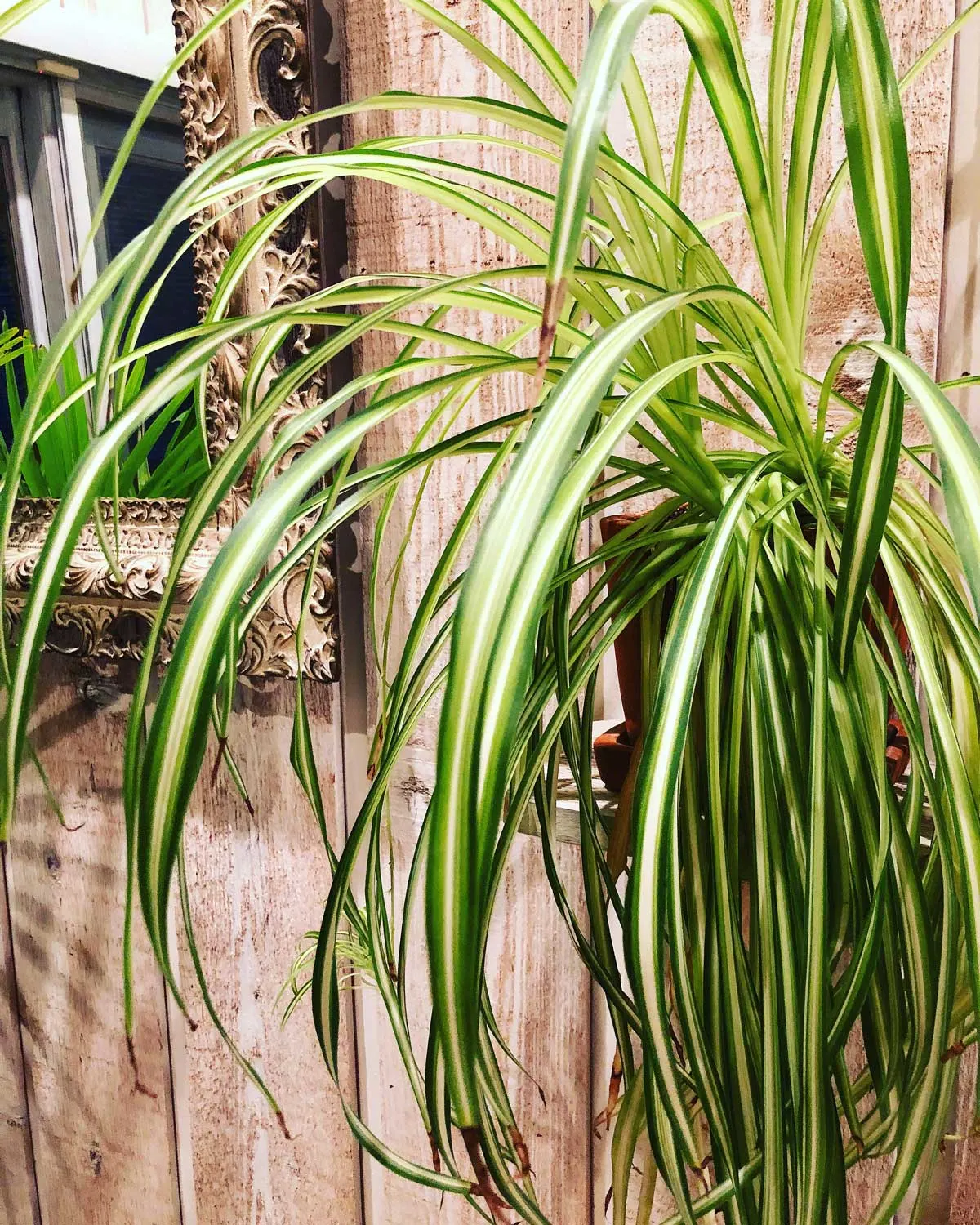
Debbie
Thursday 28th of September 2023
Fortunately, I have well water, no fluoride
Raffaele
Thursday 28th of September 2023
Perfect! :-)
Lucy
Thursday 28th of September 2023
Hi Raffaele. My solution for fluoride free water is to save the water collected in my portable room dehumidifier that I use mostly in winter in the UK, especially when drying clothes indoors or when it is damp weather. In summer I have to rely on the UK's rainy climate to collect the rainwater! Best wishes - Lucy